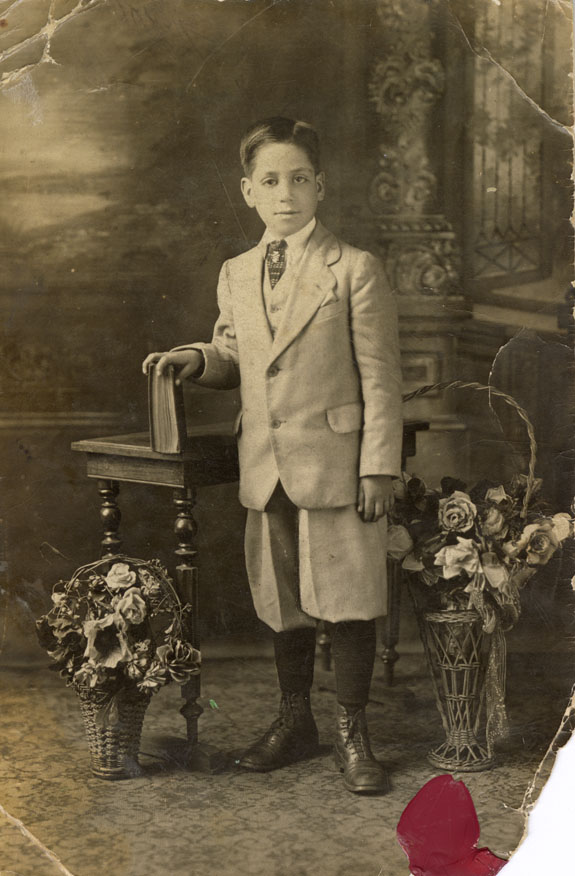
As a grade school boy in South Chicago on the cusp of the Depression, Severino Lopez was a newsboy for the Chicago Herald Examiner. For a three-cent ticket, he enjoyed the Western movies at the Petes Theater. So inspired, he played cowboys with brother, “slapping the sides of our corduroy pants to imitate the sound of horses’ hooves.” On some summer days, Sevy walked north, skirting the steel mills for over two miles, to Rainbow Beach where he collected verdolagas (purslane). He packed handfuls of the greens into paper bags; back in his neighborhood surrounding Our Lady of Guadalupe Church, he went door to door and sold them, five cents a bag, to pleased Mexican families. Sevy and his siblings spoke English at school, but their parents insisted on Spanish in the home. He served as an altar boy, with three friends, at the Claretian-run church and often helped Fr. James Tort CMF with mailings of pamphlets to promote the new devotion to St. Jude, patron of hopeless causes. When Sevy expressed an interest in the priesthood, his religious family supported him and Fr. Tort arranged his admission to the sole Claretian seminary in the US. On July 25, 1932, the feast of St. James (and Fr. Tort’s birthday), Sevy, his altar boy friends, and their families gathered for a prayerful send-off at the church, seeking the protection of Nuestra Señora de Guadalupe. Many friends and family travelled to the Santa Fe Station downtown to give the neighborhood boys a spirited send-off.
Thirteen-year-old Sevy Lopez boarded the train for a three-and-a-half-day journey, bound for Dominguez seminary, near Los Angeles. For boys raised amidst the soot and odor of the Chicago steel mills, the Claretian seminary seemed like Eden with its spacious lawns, baseball diamond and outdoor pool, and the scent of orange blossoms. That summer he repeated to himself, “Aqui me quedo!—I’m staying here!” As the province trained its first cohort of US Claretians, being a Mexican American seminarian sometimes meant the discomfort of “the feeling that I do and do not belong,” or as Lopez put it in his 2004 memoir, the “el poche syndrome.”
Lopez did become a Claretian and was ordained in 1944. Taking the train to Chicago twelve years after his departure, he stopped in Phoenix to celebrate Mass at a Claretian parish. The church filled to see Fr. Lopez, drawn because a “newly ordained priest of Mexican descent was a rarity in those days.” Days later, back at last in Our Lady of Guadalupe, he celebrated two Masses on Thursday, June 15, 1944. First, he gave communion to the St. Jude Police League with an English homily. The noon Mass drew in the parish’s mexicanos and Fr. Lopez delivered the homily in Spanish. At both hours, the South Chicago church filled to capacity.
Fr. Sevy went on to a productive career, mostly in parish ministry in Chicago, California, Texas, Georgia, and elsewhere. The emergence and growth of American Claretians — a congregation that could maneuver and minister in English and Spanish — proved essential to the province’s successes and logevity.

June 15, 1944
All quotations from Severino Lopez C.M.F.’s book, El Poche: Memoirs of a Mexican American Padre (Chicago: Claretian Missionaries, 2004).
Deborah E. Kanter wrote Chicago Cátolico: Making Catholic Parishes Mexican (University of Illinois Press, 2020). Her current research focuses on the Claretian Missionaries in the US and the creation of a national Latino ministry, 1902-2020. Verdolagas grow freely in her garden. She likes them with eggs, but pork and verdolagas is the classic recipe.
